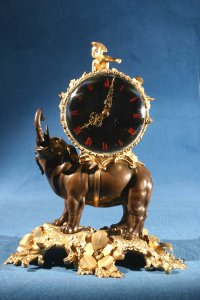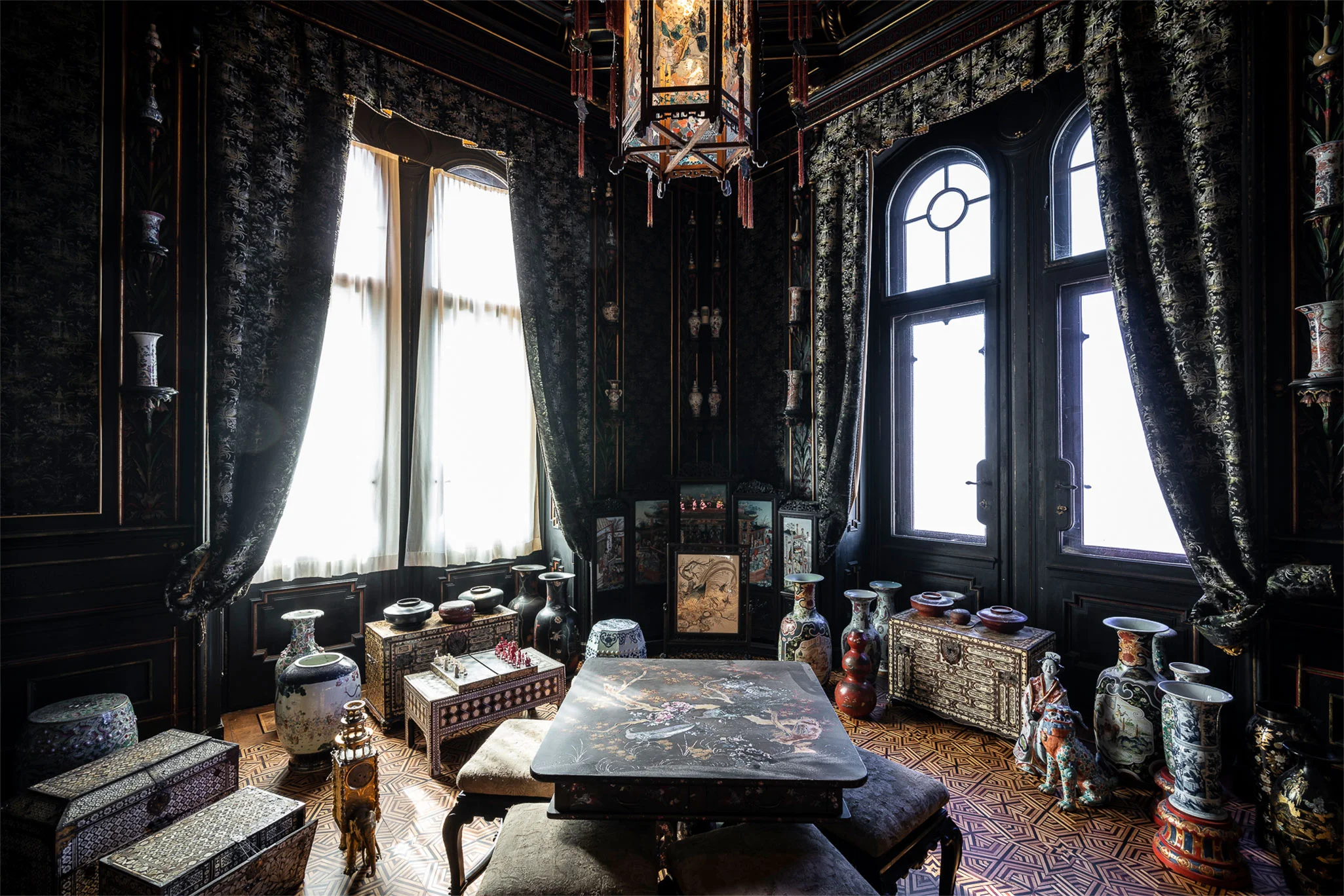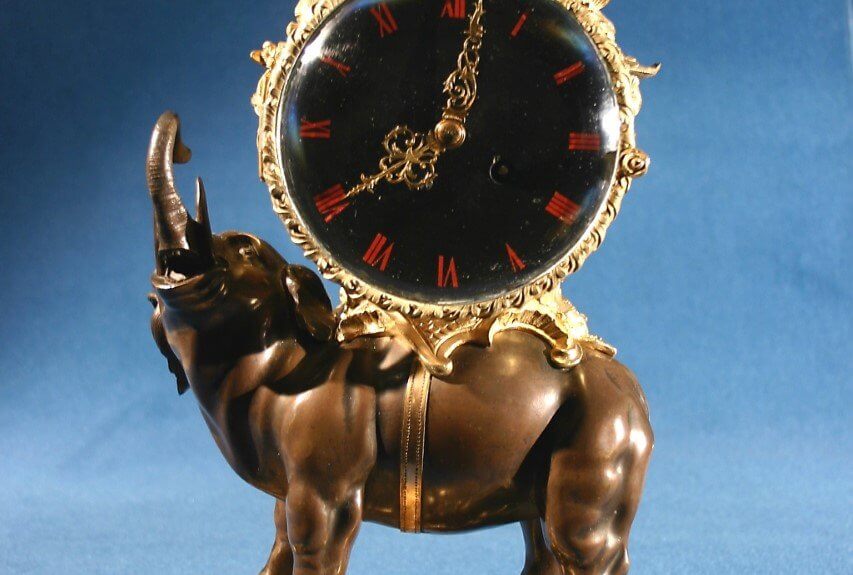Table pendulum clock, gilt bronze, enamelled steel, and glass, second half of the 18th century, bell chime, hour and half-hour.
In the Japanese sitting room, resting on a shelf, a bizarre eighteenth-century clock draws the gazes of adults and children alike, evoking distinctly Asian scenery thanks to the whimsical zoomorphic decoration of the case.
Two figures capture our attention: as if conversing with each other, in a glimpse reminiscent of a circus, an elephant, in whose belly the pendulum swings, raises its trunk toward the top of the dial, where a human-looking monkey, with a hat socked on its head, stretches its arm as if to indicate the passing of the hours.
This fantasy watch belongs to that repertoire of European chinoiserie that resorted to the theme of exotic animals, often distorting reality and creating extravagant scenes. In particular, the monkey motif recalls the rococo current of French circles called the singerie , which depicted, with a gentle touch of mild satire, often fashionably dressed monkeys imitating human behaviour.
The mechanism bears the signature of the Italian-born watchmaker Vincenti, who founded a watch parts factory in Montbéliard in 1813.






Recent Comments